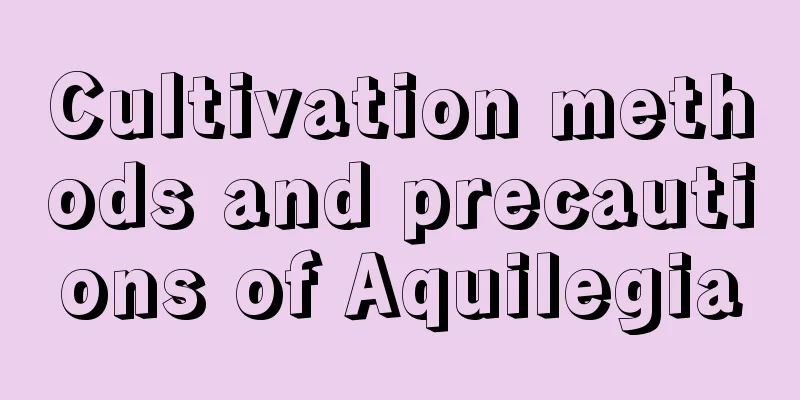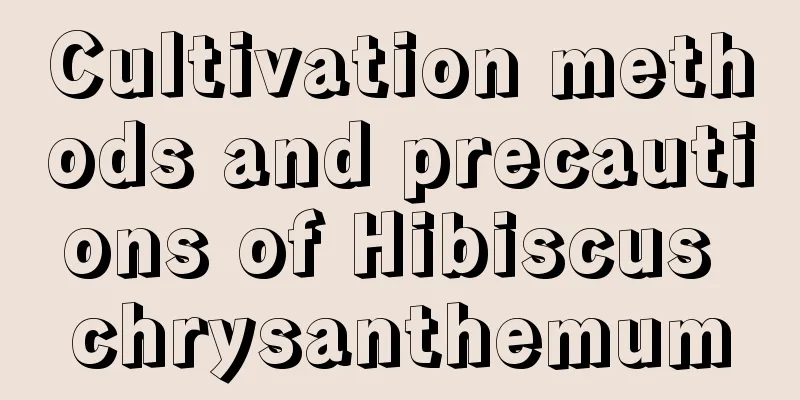Cultivation methods and precautions of Aquilegia

How to grow Aquilegia oleiferaPot soil selectionTo plant Aquilegia in a pot, you need to choose a slightly larger flowerpot and put soil in the pot. It can be sandy soil with good drainage or leaf mold rich in humus. You need to add a little base fertilizer to the soil. Light and temperatureAquilegia prefers a cool climate and avoids high temperatures but can tolerate cold. It needs to be kept in sufficient light. To care for Aquilegia, the growth temperature needs to be maintained between 15℃ and 35℃, and the light should be moderate to avoid high temperatures and exposure in summer. At this time, shade is needed, or the Aquilegia potted plants should be placed in a semi-shaded place for maintenance. Watering and fertilizingAquilegia requires strengthened management and reasonable watering and fertilization. During the vigorous growth period of Aquilegia, sufficient water is needed. The amount and frequency of watering should be determined according to the dryness and wetness of the potting soil, but water accumulation should be avoided. In dry weather, drainage is needed in a timely manner, and after rain, waterlogging is needed in a timely manner, and attention should be paid to maintaining a certain air humidity. Fertilization requires medium fertility and can be applied once a week, but be careful not to apply too high a concentration. Note that you should stop fertilizing after autumn. In addition, you need to apply some phosphorus fertilizer and potassium fertilizer before the Aquilegia blooms to make the flowers more colorful. Things to note when growing AquilegiaReproduction methodAquilegia is basically propagated by division or sowing. Sowing propagation can be done in spring or autumn, while division propagation is mainly done in autumn. ToppingDuring the growth period, Aquilegia needs to be pinched in time to control the height of the plant. After Aquilegia blooms, the withered flowers can be cut off, so that Aquilegia can be treated as a foliage plant for maintenance. Pests and diseasesThe main pest of Aquilegia vulgaris is aphid, which is very harmful and can also cause mosaic disease. In addition, there is also the harm of powdery mildew, which requires timely and reasonable treatment. |
<<: These flowers make people want to take them home! Experts are planting
>>: Cultivation methods and precautions of bulbous begonia
Recommend
When is the best time to plant ginseng fruit?
In recent years, the market prospects of ginseng ...
What flowers are suitable for flower stands
1. Lily It is suitable to place lilies on the flo...
Which month is suitable for planting chrysanthemum?
When is the best month to plant chrysanthemum? Ch...
How hops are propagated
Seed propagation If you use seeds for planting, y...
Does the lily bloom in winter?
Does it bloom in winter? First of all, the editor...
How to propagate Monstera by cuttings and precautions How to propagate Monstera by cuttings
The survival rate of Monstera deliciosa is relati...
What are the varieties of coleus
Large-leaf coleus The plant is tall with few bran...
The ornamental effect of Pyracantha
Morphological characteristics of Pyracantha Pyrac...
Why is Mimosa called Mimosa, and why do its leaves fold up when you touch them?
1. Why is it called Mimosa? Mimosa gets its name ...
Can the leaves of the fortune tree be planted alive?
1. Reasons The scientific name of the money tree ...
The difference between Cymbidium and Chunlan
1. Difference of blades Cymbidium has 5-8 ribbon-...
These "3 types" of flowers don't like water. They can grow even without watering for 30 days, and it's easier for them to overflow the pot!
1. Desert Rose As the name of the flower Desert R...
Medicinal value of green plum blossom
Medicinal value of green plum blossom Green plum ...
Is green radish poisonous to cats? Can cats smell green radish?
1. Is green radish poisonous to cats? Green ivy i...
Blueberry planting technology, planting climate requirements
1. Cultivation soil When planting, choose slightl...









